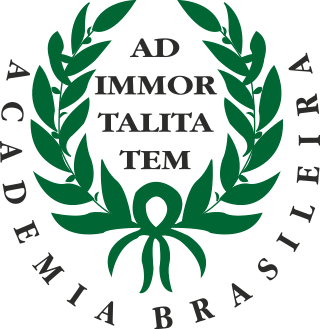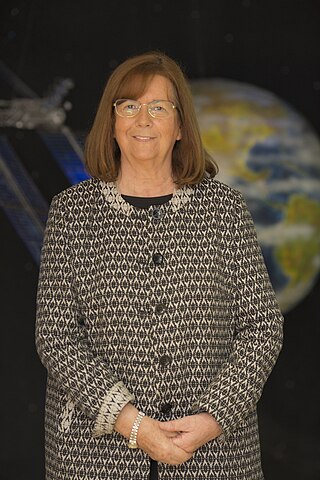Related Research Articles

BPM 37093 is a variable white dwarf star of the DAV, or ZZ Ceti, type, with a hydrogen atmosphere and an unusually high mass of approximately 1.1 times the Sun's. It is 48 light-years from Earth in the constellation Centaurus and vibrates; these pulsations cause its luminosity to vary. Like other white dwarfs, BPM 37093 is thought to be composed primarily of carbon and oxygen, which are created by thermonuclear fusion of helium nuclei in the triple-alpha process.

The Gemini Observatory comprises two 8.1-metre (26.6 ft) telescopes, Gemini North and Gemini South, situated in Hawaii and Chile, respectively. These twin telescopes offer extensive coverage of the northern and southern skies and rank among the most advanced optical/infrared telescopes available to astronomers. (See List of largest optical reflecting telescopes).

The Cerro Tololo Inter-American Observatory (CTIO) is an astronomical observatory located on the summit of Mt. Cerro Tololo in the Coquimbo Region of northern Chile, with additional facilities located on Mt. Cerro Pachón about 10 kilometres (6.2 mi) to the southeast. It is approximately 80 kilometres (50 mi) east of La Serena, where support facilities are located. The principal telescopes at CTIO are the 4 m Víctor M. Blanco Telescope, named after Puerto Rican astronomer Víctor Manuel Blanco, and the 4.1 m Southern Astrophysical Research Telescope, which is situated on Cerro Pachón. Other telescopes on Cerro Tololo include the 1.5 m, 1.3 m, 1.0 m, and 0.9 m telescopes operated by the SMARTS consortium. CTIO also hosts other research projects, such as PROMPT, WHAM, and LCOGTN, providing a platform for access to the southern hemisphere for U.S. and worldwide scientific research.

The Federal University of Rio Grande do Sul is a Brazilian public federal research university based in Porto Alegre, Rio Grande do Sul. UFRGS is among the largest and highest-rated universities in Brazil, having one of the largest number of scientific publications. From 2012 to 2019, the university was elected as the best federal university of Brazil. UFRGS has over 31,000 undergraduate students, over 12,000 graduate students, and more than 2,600 faculty members. As a Brazilian public federal institution, students do not pay tuition fees to enroll in courses offered by the university.

The Canada–France–Hawaii Telescope (CFHT) is located near the summit of Mauna Kea mountain on Hawaii's Big Island at an altitude of 4,204 meters, part of the Mauna Kea Observatory. Operational since 1979, the telescope is a Prime Focus/Cassegrain configuration with a usable aperture diameter of 3.58 metres (11.7 ft).

The Academia Brasileira de Letras is a Brazilian literary non-profit society established at the end of the 19th century. The first president, Machado de Assis, declared its foundation on Tuesday, 15 December 1896, with the by-laws being passed on Thursday, 28 January 1897. On Tuesday, 20 July of the same year, the academy started its operation.
The Brazilian Computer Society was established in 1978, as a scientific and educational organization dedicated to the advancement of computer science in Brazil and the associated technologies and applications. SBC is a leading forum for researchers, students and computing professionals working in the various fields of Computer Science and Information Technology, being the largest computer society in South America.
A pulsating white dwarf is a white dwarf star whose luminosity varies due to non-radial gravity wave pulsations within itself. Known types of pulsating white dwarfs include DAV, or ZZ Ceti, stars, with hydrogen-dominated atmospheres and the spectral type DA; DBV, or V777 Her, stars, with helium-dominated atmospheres and the spectral type DB; and GW Vir stars, with atmospheres dominated by helium, carbon, and oxygen, and the spectral type PG 1159. GW Vir stars may be subdivided into DOV and PNNV stars; they are not, strictly speaking, white dwarfs but pre-white dwarfs which have not yet reached the white dwarf region on the Hertzsprung-Russell diagram. A subtype of DQV stars, with carbon-dominated atmospheres, has also been proposed, and in May 2012, the first extremely low mass variable (ELMV) white dwarf was reported.

G117-B15A is a small, well-observed variable white dwarf star of the DAV, or ZZ Ceti, type in the constellation of Leo Minor.

GD 358 is a variable white dwarf star of the DBV type. Like other pulsating white dwarfs, its variability arises from non-radial gravity wave pulsations within the star itself. GD 358 was discovered during the 1958–1970 Lowell Observatory survey for high proper motion stars in the Northern Hemisphere. Although it did not have high proper motion, it was noticed that it was a very blue star, and hence might be a white dwarf. Greenstein confirmed this in 1969.

In 2011, Chile was home to 42% of the world's astronomical infrastructure, consisting principally of telescopes. In 2015, it was estimated that Chile would contain more than 50% of the global astronomical infrastructure by 2030. In the Atacama Desert region of northern Chile, the skies are exceptionally clear and dry for more than 300 days of the year. These conditions have attracted the world's scientific community to develop highly ambitious astronomical projects in the Atacama Desert.
Irajá Damiani Pinto, was a Brazilian paleontologist and professor at the Federal University of Rio Grande do Sul, a member of the Brazilian Academy of Sciences, and a two time president of the Brazilian Geological Society.
The Sociedade Brasileira de Geologia is a technical and scientific society that aims brings to bring together Brazilian geologists, to disseminate technical and scientific information, and to participate in national decisions involving the geological sciences.

María Teresa Ruiz is a Chilean astronomer who was the first woman to receive Chile's National Prize for Exact Sciences, the first female recipient of a doctorate in astrophysics at Princeton University, and the first woman president of the Chilean Academy of Sciences. She is known, too, for the discovery of the brown dwarf Kelu-1.
GD 61 is a white dwarf with a protoplanetary system located 150 light-years from Earth in the constellation Perseus. It is thought to have been a main-sequence star of spectral type A0V with around three times the mass of the Sun that has aged and passed through a red-giant phase, leaving a dense, hot remnant that has around 70% of the Sun's mass and a surface temperature of 17,280 K. It is thought to be around 600 million years old, including both its life as a main-sequence star and as a white dwarf. It has an apparent magnitude of 14.8. GD 61 was first noted as a potential degenerate star in 1965, in a survey of white-dwarf suspects by astronomers from the Lowell Observatory in Arizona.
SDSS J1240+6710 or SDSS J124043.01+671034.68, nicknamed Dox by its discoverers, is a white dwarf in the constellation Draco. It was discovered by Kepler de Souza Oliveira, Detlev Koester and Gustavo Ourique. It is unusual for having an atmosphere of almost pure oxygen. The atmosphere also has a detectable amount of magnesium, neon and silicon, but no hydrogen, helium or carbon. A possible explanation for the unusual composition would be if its mass were close to the limit for collapsing to a neutron star. However, its mass is only 0.56 solar masses, below the mass expected for a star that could convert carbon to oxygen, neon and magnesium.
The Brazilian Astronomical Society is a professional astronomical society in Brazil, founded in 1974.
Pierre Kaufmann was a French physicist and astronomer. He worked at Mackenzie University, Unicamp, and USP, and founded research into radio astronomy and solar physics in Brazil.

Miriani Griselda Pastoriza is an Argentine-born Brazilian astronomer, tenured professor in the Department of Astronomy of the Institute of Physics, at the Federal University of Rio Grande do Sul, and is a member of the Brazilian Academy of Sciences.
The Whole Earth Telescope is an international network of astronomers that collaborate to study variable stars. The distribution of the observatories in longitude allow the selected targets to be continuously monitored despite the rotation of the Earth.
References
- ↑ Kepler de Souza Oliveira Filho Archived 2015-12-08 at the Wayback Machine . Brazilian Academy of Sciences. Retrieved 2 December 2015.
- ↑ "Press release: Astronomers find most stable optical clock in the heavens | McDonald Observatory". Mcdonald Observatory. 1 December 2005.
- ↑ Diretoria: Biênio 2014/2016 Archived 2015-12-08 at the Wayback Machine (in Portuguese). Sociedade Brasileira de Astronomia. Retrieved 2 December 2015.
- ↑ "AURA Directory". Association of Universities for Research in Astronomy . Retrieved 2 December 2015.
- ↑ Kepler, S. O.; Koester, D.; Ourique, G. (31 March 2016). "A white dwarf with an oxygen atmosphere". Science. 352 (6281): 67–69. Bibcode:2016Sci...352...67K. doi: 10.1126/science.aad6705 . PMID 27034367.
- ↑ "Astronomia e Astrofísica" . Retrieved 7 June 2016.